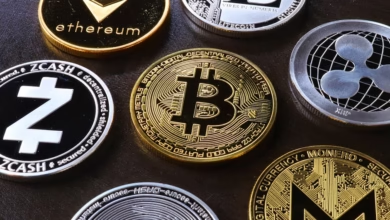Global Gold Demand: Exploring Consumption Trends, Investment Strategies, and Sustainable Practices Across Industries

In an increasingly volatile financial landscape, the global gold demand remains a focal point for investors, industries, and governments alike. As a traditional safe haven asset, gold has historically provided a reliable store of value, particularly during periods of economic uncertainty and inflation. This article delves into the intricate dynamics of gold consumption across various countries and industries, exploring how current trends shape the gold market. From the burgeoning interest in gold ETFs and futures to the significant role of physical gold in jewelry and investment portfolios, we will analyze the multifaceted aspects of gold investment and its implications for market prices.
Additionally, we will examine how sustainable gold mining practices and gold recycling initiatives are influencing the global gold supply chain, ensuring that environmental considerations are addressed alongside economic demands. With insights into gold production, refining processes, and the impact of central banks' gold reserves, this article provides a comprehensive overview of the gold market analysis. Join us as we uncover the trends driving global gold demand and the future of this precious metal in an evolving financial ecosystem.
- 1. Global Gold Demand: Analyzing Consumption Trends by Country and Industry
- 2. The Role of Gold as a Safe Haven Asset: Insights into Investment Strategies and Market Trends
- 3. Gold Production and Recycling: Sustainable Practices in the Gold Market and Their Impact on Prices
1. Global Gold Demand: Analyzing Consumption Trends by Country and Industry
Global gold demand has been a dynamic and evolving landscape, driven by various factors such as economic conditions, cultural significance, and technological advancements. Analyzing consumption trends by country and industry reveals a complex interplay between these elements, shaping the gold market trends we observe today.
Emerging economies in Asia, particularly China and India, continue to dominate global gold demand, largely due to cultural affinity for gold jewelry as a symbol of wealth and status. In India, gold jewelry accounts for a significant portion of consumption, especially during festival seasons and weddings. Similarly, China’s appetite for physical gold has surged, with gold bars and coins becoming popular investments amid rising economic uncertainty. These countries not only drive jewelry demand but also contribute substantially to gold investment, with a growing interest in gold ETFs and gold bullion.
In contrast, Western nations are increasingly viewing gold as a safe haven asset, particularly during periods of inflation and economic volatility. Central banks, especially in Europe and North America, have been stockpiling gold reserves to hedge against market fluctuations and currency devaluation. This trend reflects a broader strategy to diversify portfolios, with gold futures and gold coins investing becoming attractive options among institutional investors.
The industrial demand for gold, particularly in technology and electronics, has also shown resilience. As technology advances, gold's unique properties make it indispensable in high-performance electronics and medical devices. The growing focus on sustainable gold mining practices is crucial in ensuring that this demand does not come at the expense of environmental integrity. Consumers and investors are becoming more conscious of the origins of their gold, pushing for transparency in the gold trade and gold refining processes.
Moreover, gold recycling has gained traction as a means to meet demand while minimizing environmental impact. By reusing existing gold, industries can reduce the need for new gold mining, addressing concerns related to gold smuggling and illegal mining practices that often accompany the gold trade.
The interplay between gold and cryptocurrency is another area of interest. As digital currencies gain popularity, many investors are looking to balance their portfolios with traditional assets like gold. This has led to discussions around the gold standard and how it compares with the volatility often associated with cryptocurrencies.
In conclusion, the analysis of global gold demand by country and industry reveals a multifaceted market influenced by cultural preferences, economic factors, and technological innovations. As we look ahead, understanding these trends will be vital for investors and stakeholders in the gold market, ensuring they make informed decisions in a continuously shifting landscape.
2. The Role of Gold as a Safe Haven Asset: Insights into Investment Strategies and Market Trends
In recent years, gold has consistently maintained its reputation as a safe haven asset, particularly during periods of economic uncertainty and inflation. Investors often turn to gold investment strategies during market volatility, utilizing it as a hedge against downturns and currency fluctuation. The gold market trends indicate that demand for physical gold, including gold bars and coins, tends to rise when geopolitical tensions escalate or when there are signs of economic instability.
Central banks across the globe have also been increasing their gold reserves as a strategic move to bolster national security and financial stability. For instance, countries like Russia and China have significantly expanded their gold holdings, reflecting a growing trend of central banks diversifying their assets away from traditional fiat currencies. This accumulation of gold not only supports the value of their currencies but also enhances their position in the global gold trade.
Investment vehicles such as gold ETFs (Exchange-Traded Funds) and gold futures provide modern alternatives for those looking to invest in the gold market without the need for physical storage. These instruments have surged in popularity, allowing investors to gain exposure to gold prices without the complexities of gold mining or refining.
The relationship between gold and inflation is another crucial aspect that shapes investment strategies. Historically, gold has been seen as a reliable store of value during inflationary periods, prompting many investors to consider gold collectibles, like luxury gold jewelry and gold coins, as part of their portfolio. This trend is further fueled by the increasing interest in sustainable gold mining practices, which appeal to environmentally conscious investors.
Moreover, the rise of cryptocurrencies has introduced new dynamics into the gold market analysis. While some view cryptocurrencies as a modern alternative to gold, many still regard gold as a timeless investment, particularly in times of economic turbulence. The debate between gold and cryptocurrency continues to evolve, but gold's longstanding status as a safe haven asset remains unchallenged.
In conclusion, as global gold demand continues to shift, understanding the role of gold as a safe haven asset is essential for investors. With strategies encompassing everything from gold bullion and gold coins investing to the emerging trends in gold recycling and sustainable mining, investors can craft a diversified approach that capitalizes on the wealth preservation qualities of gold amidst fluctuating market conditions.
3. Gold Production and Recycling: Sustainable Practices in the Gold Market and Their Impact on Prices
Gold production and recycling play a vital role in the dynamics of the gold market, influencing not only supply but also pricing trends. As global gold demand continues to evolve, sustainable practices in gold mining and recycling have emerged as important factors for both environmental responsibility and market stability.
Sustainable gold mining practices are increasingly prioritized by companies aiming to reduce their environmental impact while meeting the growing appetite for gold investment. These practices include responsible sourcing, reducing water usage, and minimizing land disruption. As consumers become more conscious of the environmental implications of their purchases, the demand for sustainably mined gold, especially in the luxury gold and gold jewelry sectors, is on the rise. This shift can also impact gold prices: sustainably mined gold can command a premium, reflecting its ethical sourcing.
Recycling plays a crucial role in the gold market as well. Gold recycling involves reclaiming gold from old jewelry, electronics, and other sources, allowing for the reuse of existing gold reserves. This not only reduces the need for new gold mining but also helps stabilize the market by providing a consistent supply of physical gold. With advancements in gold refining technology, the recycling process has become more efficient, making it an attractive option for investors and collectors alike. Gold ETFs and gold futures often incorporate recycled gold, contributing to a more sustainable investment landscape.
Furthermore, gold recycling helps mitigate issues related to gold smuggling and illegal gold trade, which can undermine legitimate market activities. By increasing the supply of recycled gold, the market can reduce dependence on newly mined gold, potentially lowering the influence of geopolitical tensions on gold prices.
As we observe the interplay between gold production, recycling, and market trends, it's clear that sustainable practices are becoming increasingly important. Central banks are also recognizing the need to maintain gold reserves responsibly, further integrating sustainable practices into their gold market analysis. The future of gold, whether as a safe haven asset or a hedge against inflation, will likely involve a greater emphasis on sustainability in both gold mining and recycling, ultimately shaping global gold demand and influencing prices in a complex economic landscape.
In conclusion, the global gold demand landscape is shaped by a myriad of factors, including country-specific consumption trends and the evolving needs of various industries. As we have explored, gold continues to hold its status as a safe haven asset, particularly in times of economic uncertainty and inflation. Investors are increasingly turning to gold ETFs, gold futures, and physical gold as part of their investment strategies, recognizing the metal's resilience against market volatility.
Moreover, sustainable practices in gold mining and recycling are critical to maintaining the delicate balance between supply and demand while addressing environmental concerns. The rise in gold production from both mining and recycling processes is essential for stabilizing gold prices and ensuring the longevity of gold reserves.
As central banks bolster their gold reserves, and the appetite for luxury gold items and collectibles grows, the intricate dynamics of the gold market continue to shift. Whether through gold bullion, coins, or technology, the global gold trade remains a pivotal element of financial markets worldwide.
As we look ahead, staying informed about gold market trends and their implications on investments will be vital for those looking to navigate the complexities of gold trading. By understanding these trends, investors can make more informed decisions in a market that is as dynamic as it is enduring.
References
[Include your list of sources here]




